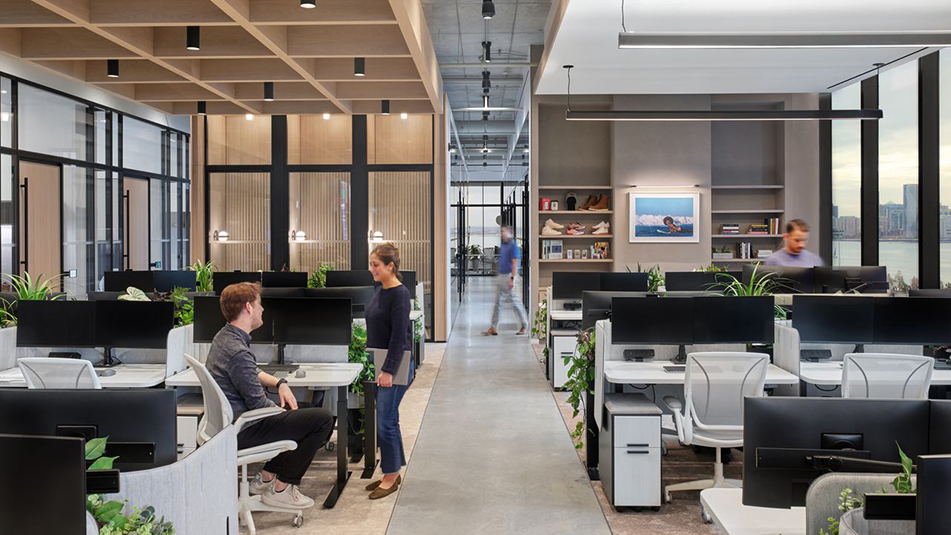The Pandemic and Workplace Flexibility: The Lessons We've Learned
When the pandemic first began in early 2020, employers had no choice but to pivot on a dime. No matter their sector, whether higher education, commercial real estate or life sciences, they had to trust their employees to do the work they were required to do, despite the upheaval in the world. But the results proved to be quite unexpected. Employees not only completed their work successfully but, in many instances, produced their best work. Despite incredible odds, employees thrived when given the autonomy and flexibility to get work done in a time and manner that made sense in a chaotic world. Now, some employees want that to continue. In a survey of 25,000 people conducted by IBM, 75% of respondents said they would like to continue to work from home in at least a partial capacity, while 40% of respondents said they feel strongly that their employer should give employees the choice to opt-in to remote work. As the world opens up and restrictions continue to lift, the previous level of chaos is dissipating. However, employees still want the same autonomy and flexibility they have enjoyed. Here’s a look at how organizations can embrace that flexibility to function better than ever.
A Shift in Mindset
Pre-pandemic expectations around work were largely based on outdated trends where work expectations were centered around a certain time period and set of parameters completed in a designated work area. Productivity was akin to the time and hours spent in that pre-prescribed location vs. the output of work. In many cases this perception of pre-pandemic work doesn’t exist anymore, and employees are no longer hesitant to point this out. The measurement of your productivity wasn't about your output, but the time and hours that were spent in a pre-prescribed location. But in many cases that doesn't exist anymore, and employees aren’t hesitant to point this out. According to the Harvard Business Review, 96% of employees said they need flexibility. However, only 47% of them reported having access to the types of flexibility they need. Given this gap between employees voicing a need for flexibility to ensure higher productivity but only a small percentage of those employees receiving it highlights the need for a shift in workplace mindset.
The Workplace Isn’t Going Away
Whether it’s the classroom or the physical office environment, these spaces, or the need for access to these spaces, is not going away. Before, it was about a pre-prescribed expectation of what happened in a physical building and a space. Now, the workplace is centered around collaboration, innovation, and bringing people together. Employees now see the office as an asset to leverage when the work requires them to access these spaces. Employees see the workplace as an advantage vs. an obligation. Each workplace has to offer employees spaces in which they can get their work done, as well as the flexibility and autonomy to do the work they need to do. For instance, if they need to complete "heads down” work, they want the ability to find the space and time to do that work on their own. If it's collaborative work, they want the ability to choose whether that’s done over technology or in a collaborative environment for a prescribed amount of time. This means going beyond the traditional cubicle or bench next to a flurry of other colleagues. If employers want their team members to agree to return, they need to provide the spaces and places that are conducive to a thriving workplace. We'll always have the workplace, but it’s how we leverage that environment to support employees that’s going to make the difference.
Trust Is Paramount
A strong level of trust is the foundation upon which the new way we work is built. We all know that employers need to trust their team members to be productive. But that trust is reciprocal. Multiple studies from the Great Place To Work Institute state that companies with high-trust cultures have greater financial success than those that don’t. In contrast, employees who are less trusted by their manager exert less effort, are less productive, and are more likely to leave the organization, according to the Harvard Business Review. If employers want to maintain their workforce, they need to provide team members with the adequate resources and autonomy to work in a way they see fit. As a result, a mutual sense of trust will develop, and employees are more likely to thrive.
It’s clear there is no one-size-fits-all approach to tackle the new ways of working. When done sufficiently, each organization will find an approach that's tailor-made to help their team members thrive. If you’re interested in looking inward to determine what changes your organization needs to implement as you return to the office, Cresa’s team of qualified advisors and resources is ready to help.


